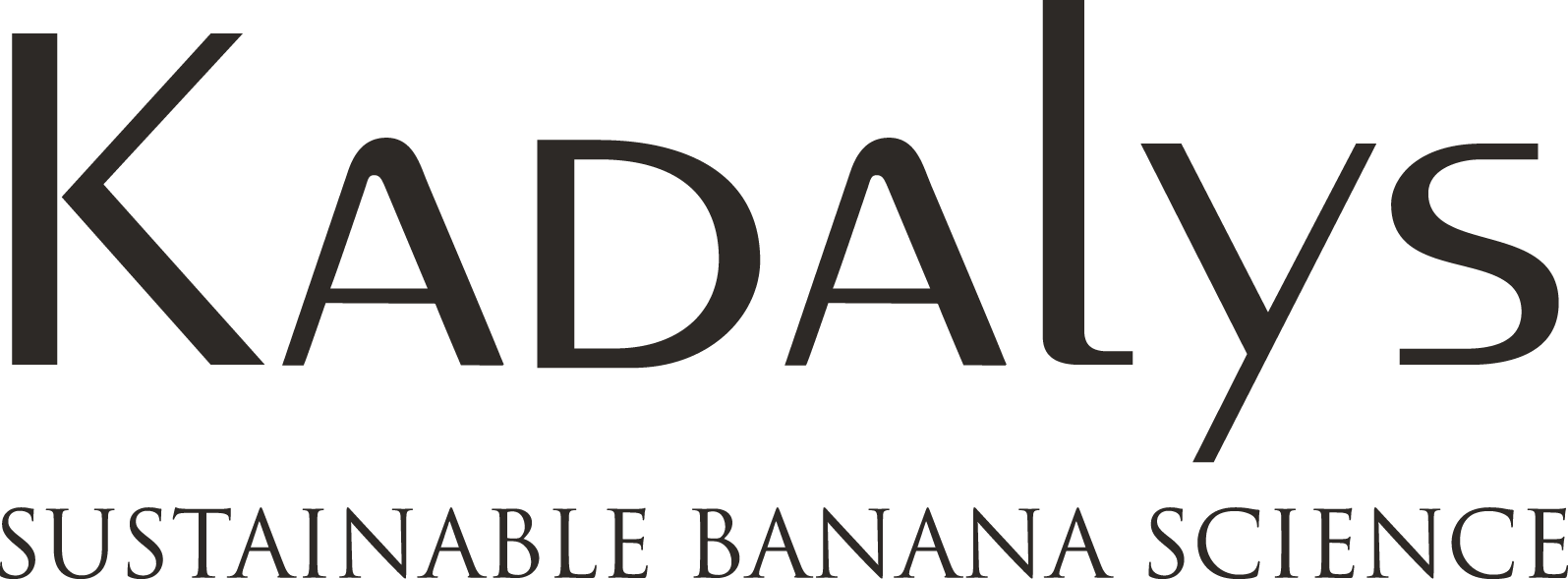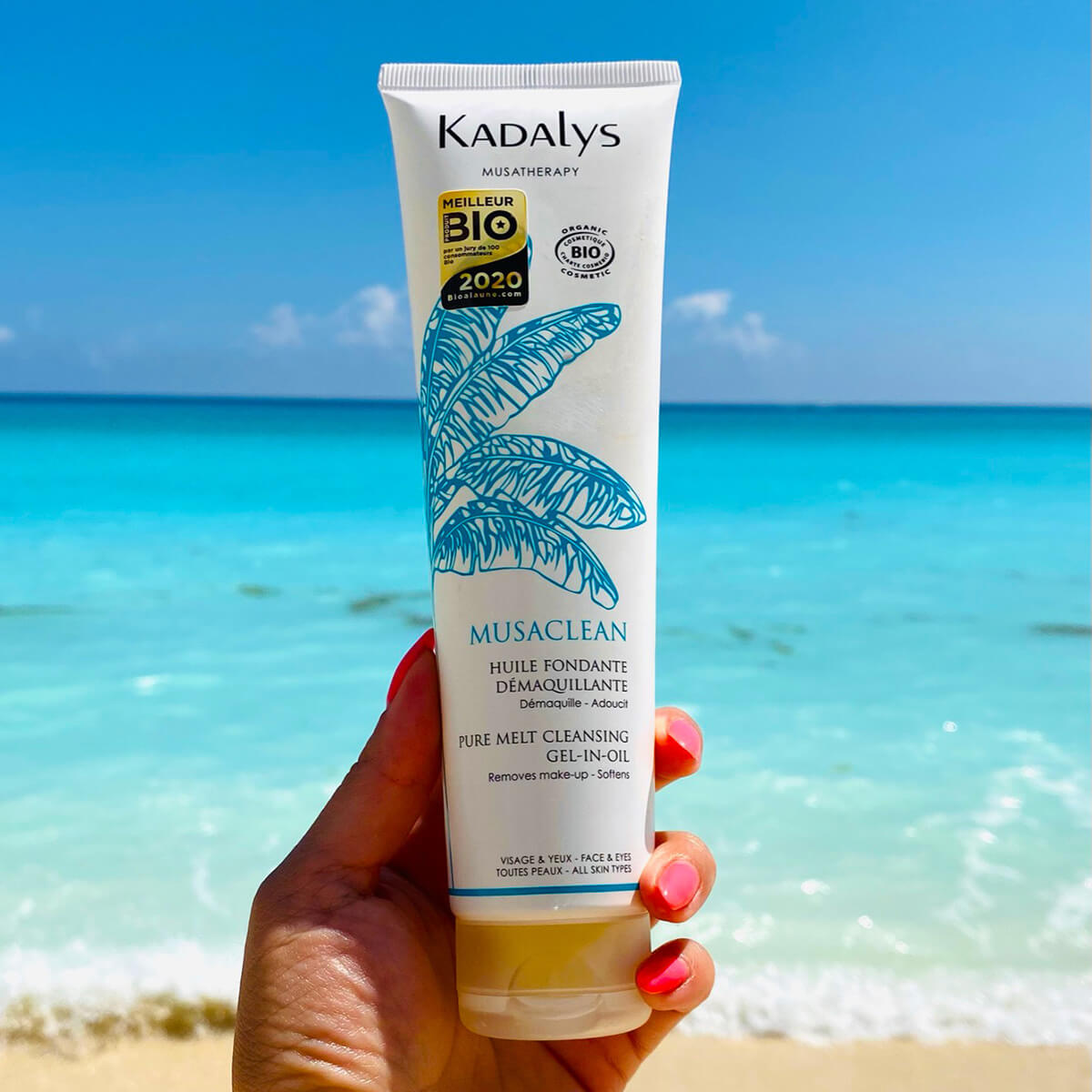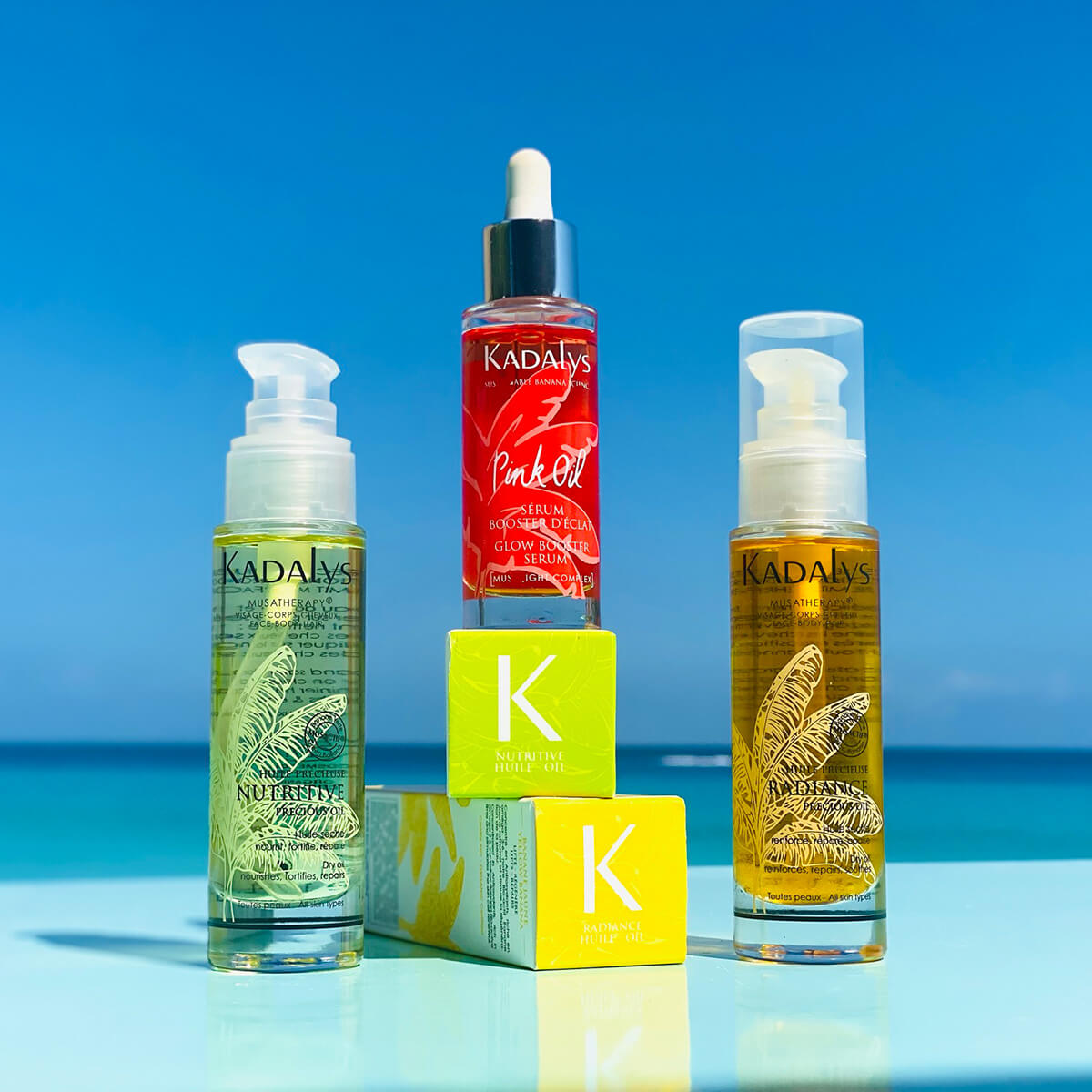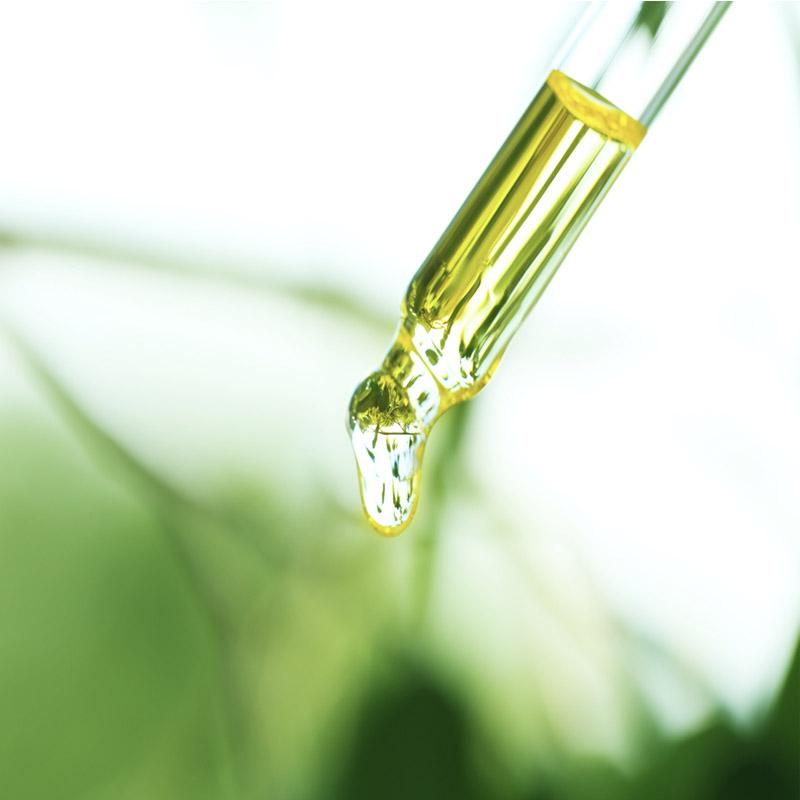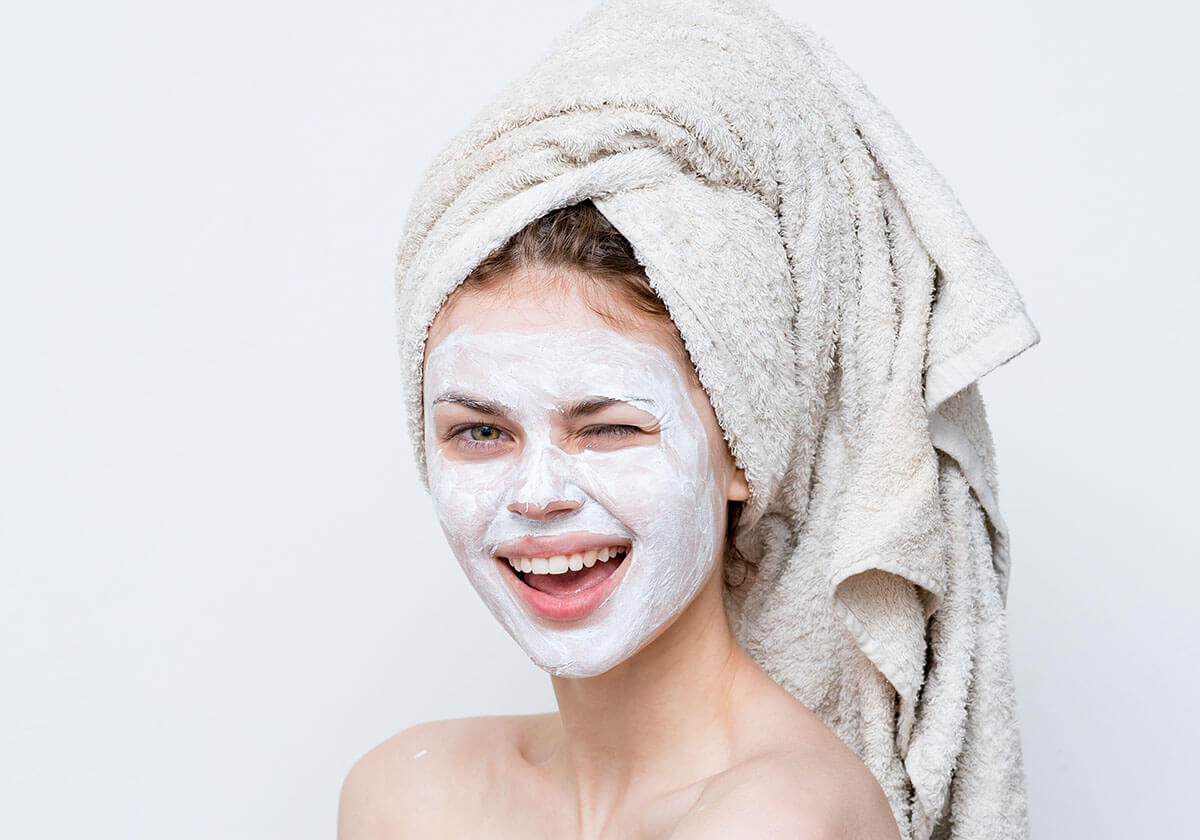
How to Exfoliate Your Face By Skin Type
Like most people, you probably don't think about how to exfoliate your skin often. But the truth is exfoliation is a vital part of any skincare routine.
Today, we will discuss the benefits of exfoliation and explain why it's so important to have a good exfoliator in your arsenal of skin care products. We'll also look at the different home exfoliation methods available today and help you choose the right one for your skin type!
What is exfoliation?
Exfoliation is the process of removing dead skin cells from the skin's surface. You can exfoliate your face with various products, including scrubs, exfoliating gloves, and chemical exfoliants.
Exfoliation is essential for maintaining healthy skin, as it helps to remove dirt, oil, and other buildups that can clog pores and lead to breakouts.
While exfoliation benefits all skin types, those with dry or sensitive skin should use caution, as over-exfoliation can lead to irritation and harm the moisture barrier.
When used correctly, however, exfoliation can help you achieve a healthy, glowing complexion!
Why do I need it?
No matter the skin type, cell turnover rate slows down, and collagen production decreases as we age. The skin aging process can lead to dull, dry skin that is more susceptible to wrinkles and other signs of aging.
Exfoliation can help to combat these effects by stimulating cell renewal and increasing collagen production. As a result, regular exfoliation is a vital part of any anti-aging skincare routine and is not just for those with mature skin.
Exfoliation helps to speed up skin cell turnover, remove dead skin cells that can make your complexion look dull, and help clear the way for serums and moisturizers to penetrate your skin better.
It also helps stimulate collagen production, which leads to firmer, younger-looking skin. In short, regular exfoliation is a crucial part of any anti-aging skincare routine. By sloughing away old skin and stimulating cell renewal, you can keep your complexion looking its best for years to come.
Read more: 7 Reasons Why You Should Exfoliate
Why do skin cells build up?
Dead cell buildup is a natural part of the skin cell renewal process. However, too many dead cells on the skin's surface can lead to dull skin, dry, flaky patches, and other skin problems.
Fortunately, we can do a few things to eliminate the buildup and reveal brighter skin and a healthier glow. The best approach is to exfoliate your face regularly using whichever exfoliation method is best for your skin type or skin condition.
Read more: Dead Skin Build Up: Causes & Tips to Remove
What are the different types of exfoliators?

There are two main types of exfoliators: physical and chemical.
Physical or mechanical exfoliation works by manually sloughing off the top layer of dead skin.
Chemical exfoliators use enzymes or acids to dissolve the bonds between old or dead cells. The two most common types are AHAs (alpha hydroxy acids) and BHAs (beta hydroxy acids)
AHAs
Alpha hydroxy acids are water-soluble acids typically derived from citrus fruits. They work by loosening the bonds that bind lifeless cells together, allowing them to be sloughed off more easily. AHAs can be used to treat a variety of concerns, including dryness, rough texture, and fine lines. However, they can also increase sun sensitivity, so it's essential to use sunscreen when you're using an AHA product.
BHAs
Beta hydroxy acids are oil-soluble acids typically derived from willow bark or other plant sources. They work by penetrating the pores and dissolving the buildup of cells and sebum that can lead to acne breakouts. BHAs, such as salicylic acid, can be used to treat acne and other conditions associated with clogged pores. However, they can also be drying, so it's essential to use a moisturizer afterward if you have dry, sensitive, or reactive skin.
Examples of key ingredients in chemical exfoliants:
- Lactic acid (AHA)
- Glycolic acid (AHA)
- Fruit enzymes (AHA)
- Salicylic acid (BHA)
Examples of physical exfoliants include:
- Scrubs (with ingredients like jojoba beads or salt)
- Exfoliating gloves
- Exfoliating dry brush or sponge
- Cleansing device or exfoliating tool
Exfoliating gloves and dry brushes are more commonly used on the body and areas of thicker skin, such as elbows and feet.
How often should I exfoliate skin?
How often you exfoliate depends on your moisture barrier's health, current skin condition, and overall skin type.
Those with dry or sensitive skin should only exfoliate once or twice a week, while those with oily skin can exfoliate three or even four times a week. It's important not to over-exfoliate, as this can lead to irritation.
If you're concerned about exfoliating, talk to a board-certified dermatologist, esthetician, or skincare professional. They can help you find the best method for your individual needs.
What is the best exfoliation method for me?
The best way to exfoliate depends on your skin type, skin condition, and what you want to achieve.
The best exfoliation method for you will ultimately depend on your skin type and what kind of results you're looking to achieve. Chemical exfoliators are generally considered more gentle, making them a good choice for those with reactive, sensitive, or very sensitive skin.
Here are a few general tips that can help you get started, listed by skin type.

Combination or normal skin?
Normal or combination skin means your skin is drier in some areas and oily in others. Combination skin allows you to use a two-fold process that involves mechanical exfoliation with a physical exfoliant, such as a scrub, and chemical exfoliation with AHAs or BHAs to exfoliate the skin.
Start slowly and increase frequency as you become more accustomed to the process. Exfoliating too often can irritate skin, so finding a balance that works for you is essential.
Acne-prone skin?
If you have acne-prone skin, exfoliation can help to improve your skin's appearance by unclogging pores and removing dead skin cells. However, choosing the right type of exfoliation for your skin is essential.
Physical exfoliants, such as scrubs, can aggravate acne and even cause further breakouts.
Instead, focus on chemical peels, which use acids to dissolve the bonds that bind dead or old cells to the skin's surface. When used correctly, chemical exfoliation can help to improve your skin's texture and tone without causing additional irritation.
Follow up with a moisturizer to prevent dryness and irritation.
Oily skin?
Many people believe that exfoliating is only for those who have dry skin, but this couldn't be further from the truth. Gentle exfoliation is an integral part of any skincare routine, especially for those with oily skin.
Exfoliating helps eliminate excess oils, slough off lifeless skin cells, and unclog pores, allowing your skin to breathe and reduce acne breakouts. For those with an oily skin type, you can exfoliate more frequently than other skin types, but be careful not to overdo it. Otherwise, you may experience skin irritation or worsen dry skin.
If you have oily skin, we recommend that you exfoliate your skin two to three times a week. Be sure to avoid harsh scrubs that can damage your moisture barrier, irritate skin, or disrupt the delicate balance of your skin. Focus on gentle acids or mild scrubs.
Dry, reactive or sensitive skin?
If you have dry, sensitive, or reactive skin, chemical exfoliation is a gentler way to exfoliate skin and improve your complexion than scrubbing with a physical exfoliator.
Chemical exfoliants use acids to break down the bonds that hold dead skin cells together, allowing you to wash them away. This process not only leaves your skin looking brighter and more radiant but also can help reduce the appearance of pores, fine lines, and wrinkles.
When choosing a chemical exfoliant, look for one that contains a gentle acid, such as lactic acid or fruit acids. Start with a product that has a low concentration of AHAs and use it once a week, gradually increasing the frequency as you become accustomed to it. Follow up with a moisturizer to soothe and protect your skin.
How does exfoliating affect skin tone?
Exfoliation is key to maintaining even, glowing skin and a more even-looking complexion. It can also help to even out the complexion by lightening dark spots and reducing the appearance of fine lines and wrinkles.
When you remove dead skin cells, you allow new, healthy cells to come to the surface, revealing the radiant complexion beneath.
Since exfoliated skin allows your skincare products to penetrate better, skincare products for hyperpigmentation and dark spots will work more effectively after exfoliation.
Regular exfoliation also provides an excellent opportunity to assess your skin's hydration levels and treat it accordingly. Hydration is key to keeping cells bouncy to enable an overall glow.
Be sure to use natural, gentle circular motions when exfoliating. Over-exfoliating will damage the skin and cause inflammation. When done correctly, exfoliation will leave your skin feeling smooth, hydrated, and looking more even.
What is the best way to scrub my face?

With so many scrubs and exfoliants on the market, it's not always clear to know how to exfoliate your face correctly.
Here's a step-by-step guide to help you get the most out of your next exfoliation session.
First, start with clean skin. Wash your face with your regular cleanser, then rinse it off thoroughly.
If using a physical exfoliant
Apply the exfoliating scrub to clean, damp skin. Gently scrub your face using light strokes and circular motions for one to two minutes, avoiding the delicate area around your eyes.
A gentle facial massage can also increase your blood circulation, which helps deliver nutrients and oxygen-rich blood to your skin. Rinse thoroughly with warm water and pat your skin dry.
If using a chemical exfoliant
Apply the chemical exfoliant to your clean, dry face like a mask. Allow it to sit on the skin for 5 to 10 min, depending on the specific product usage instructions. Rinse off with lukewarm water and pay skin dry.
In both cases, you should follow up with a gentle moisturizer. By following these steps, you'll be on your way to achieving radiant, healthy-looking skin.
If using a product that offers both chemical and physical exfoliation
Start with the chemical exfoliation step. Apply the chemical exfoliator to your clean, dry face like a mask. Allow it to sit on your face for 3-5 min, depending on the specific product usage instructions.
Add warm water to your face and Gently massage your face using circular motions. Be careful not to scrub too hard or for too long. The goal is to loosen up the peel so you can rinse it away. Rinse thoroughly with warm water. Pat dry.
After exfoliating your skin, you should follow up with a gentle moisturizer. By following these steps, you'll be on your way to achieving a radiant, healthy-looking glow.
How do you exfoliate gently?
If you are worried about exfoliating too harshly, skip the mechanical exfoliation and focus on using a mild chemical exfoliator or peel instead. These exfoliants work by dissolving the bonds that hold dead skin cells together, allowing the cells to slough off more easily.
Unlike physical exfoliants, which can sometimes be too harsh on the skin, a chemical exfoliator work by dissolving the bonds between dead skin cells, resulting in gentle and effective exfoliation. You can find chemical exfoliants in various formulations, from gels and serums to toners and cleansers.
Start with a light concentration of ingredients and increase the strength as your skin becomes more accustomed to the product. Avoid the delicate eye area and focus on areas where you notice buildups, such as the nose, chin, and forehead. You should only need to exfoliate two or three times a week to see results.
With these tips, you can safely and effectively exfoliate your skin at home.
The bottom line
Exfoliation is an essential step in any skincare routine. It removes the dead cells that can make your complexion look dull and tired. Not only that but exfoliating also helps your other products penetrate better and work more effectively. There are many different ways to exfoliate, so it's crucial to find one that works best for you.
And if you're still unsure where to start, check out our vegan face scrub and gentle exfoliator, which has a physical and a chemical exfoliant so you can choose how you exfoliate. It uses the power of green banana bio-actives, natural fruit acids, and jojoba beads to exfoliate dead skin cells without harsh chemicals or abrasives. So go ahead and give your skin the TLC it deserves—exfoliate with confidence!
And if you still have questions, talk to your board-certified dermatologist, esthetician, or skincare professional. They can help you find the best method for your individual needs.
Keep Reading To Learn More
Why Exfoliate (& Why You Shouldn't)
Dead Skin Build Up: Causes & Tips to Remove
